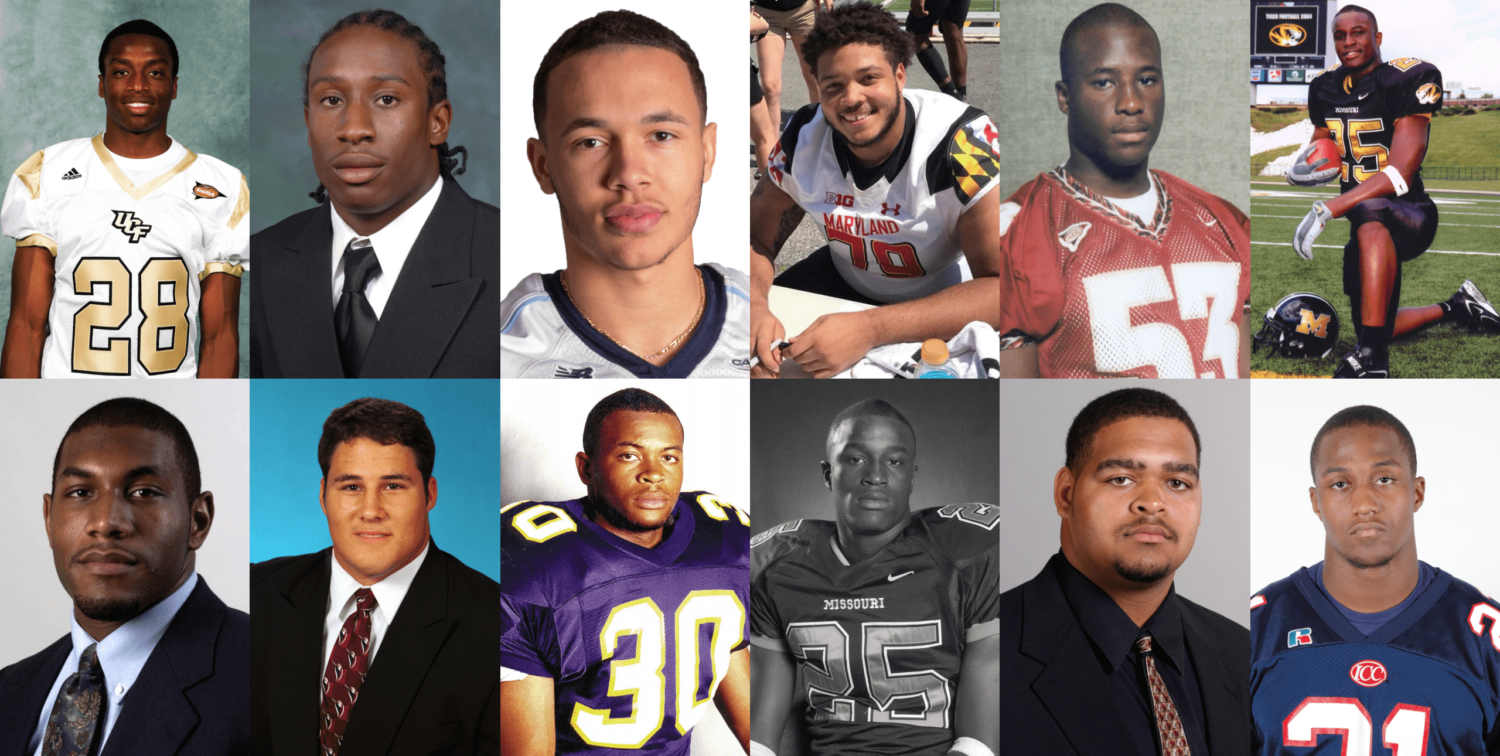The Lead is a weekly newsletter that provides resources and connections for student journalists in both college and high school. Sign up here to have it delivered to your inbox every Wednesday morning during the school year.
The project idea started with the death of Jordan McNair, a football player at the University of Maryland.
McNair suffered heatstroke after a sprint workout in a 2018 practice, was hospitalized and died 15 days later. Kevin Blackistone, who teaches sports journalism classes at Maryland, noticed that many stories about his death mentioned previous college football players who had died in practice.
Blackistone wondered: Why did these student-athletes die, and what’s being done to prevent future deaths?
Those questions led to more than two years of work by dozens of Maryland students and a final project copublished with USA Today and Maryland’s Howard Center for Investigative Journalism. “Pushed Too Far,” published in August 2021, chronicles the 22 Division I football players who’ve died from overexertion since 2000.
“There’s a great human toll in sports,” Blackistone said. “This story just happens to focus on the most tragic in one particular sport at one particular time.”
Months after McNair’s death, Blackistone introduced the project to his spring 2019 sports reporting and writing class. To find athlete deaths over a period of almost 20 years, he assigned small groups of students to five-year chunks. Students used public records requests and news archives to find as many college football player deaths as they could in their assigned time period.
The next spring, students in the same sports reporting class were assigned to determine which deaths were specifically tied to overexertion at practices. They used news archives, examined litigation from players’ families, requested death certificates and interviewed parents and lawyers. The project focuses on cases where a player died from one of three causes: sickle cell trait, heatstroke, and sudden cardiac arrest.
Integrating investigative journalism into his sports reporting class helps students learn how to collaborate, do “deep dives” into an issue and go beyond typical game stories and features, Blackistone said.
“It’s important for young sports journalists to have a critical eye of the industry that they’re getting into,” he said. “Sports are not just about fun and games.”
Maryland master’s student Dan Novak, now graduated and working at Voice of America, used the research from Blackistone’s students to dig into schools’ responses, NCAA policies and safety protocols designed to prevent deaths. He started working on the project in spring 2020, his last semester as a student, and continued after graduation when a fellowship was canceled by the COVID-19 pandemic.
There are few repercussions for football programs and coaches when an athlete dies, Novak found — the NCAA hasn’t punished any trainers, coaches or schools involved in the deaths. Some trainers and coaches who resigned or were fired found jobs at other schools. And while the NCAA has issued recommendations to make workouts safer, they aren’t binding and sometimes aren’t followed by athletics programs.
“The point of the story wasn’t to relitigate each case and figure out if there was definitely some sort of irresponsible workout,” Novak said. “It was more an accounting of everything that had happened and what universities, coaches, the medical community and the NCAA are doing to prevent this from happening.”
The project also features a visual timeline of the 22 Division I deaths, interspersing NCAA policy changes with photos and short profiles of each player. The photos were especially striking for readers, Blackistone said: “Before there had only been a number, and now they’re human faces.”
The issue is a topic of federal discussion, as politicians have made efforts to regulate college sports and ensure a safe environment for athletes. A group of senators introduced a College Athletes Bill of Rights in 2020, hoping to create enforceable health and safety standards and give athletes in revenue-generating sports a share of profits.
As the landscape of college sports changes, Blackistone’s students have a new collaborative project in the works. They’re looking at which athletes are benefiting most from the NCAA’s new rule that allows student-athletes to profit from their own name, image and likeness.
Blackistone hopes that these projects will help his students learn to approach sports journalism as critical thinkers, not as fans.
“Issues in sports do not exist in a vacuum,” Blackistone said. “They often are barometers to what is going on in society at large.”
More on sports journalism
This issue is the last in an ongoing series about sports journalism from The Lead. More recent issues:
- 10 months of reporting, little help from the athletics department
- What 8 young sports journalists want students to know about starting their careers
- Getting out of your comfort zone: Tips for integrating sports into your newsroom
- Sports journalism is about more than just sports
One story worth reading
It’s almost time for this year’s NCAA March Madness competition, and that means your college publication can get involved in the second year of a fundraising competition: College Media Madness. The Daily Orange at Syracuse University launched the challenge last year, challenging student newsrooms around the country to collect donations from supporters and alumni. 27 participating newsrooms raised more than $96,000.
Want to get involved this year? Follow @mediamadness22 on Twitter and fill out this form to express interest.
Opportunities and trainings
- Poynter’s internship database lists paid newsroom internships at publications around the country.
- High school students, enter the JEA/SPJ essay contest by Feb. 19.
- Learn more about how you can get involved in Student Press Freedom Day, coming up on Feb. 24.
- Register for The Association of LGBTQ Journalists’ student conference, to be held virtually Feb. 25-26.
- Enter NPR’s Student Podcast Challenge by Feb. 28.
- High school juniors, apply for the Al Neuharth Free Spirit and Journalism Conference by March 1.
- Register for The Nation’s free student journalism conference, to be held virtually March 4.
- High school seniors, consider applying for your state’s Journalist of the Year contest this spring. Deadlines vary by state.
- Register for the JEA/NSPA National High School Journalism Convention, to be held in Los Angeles April 7-9.









